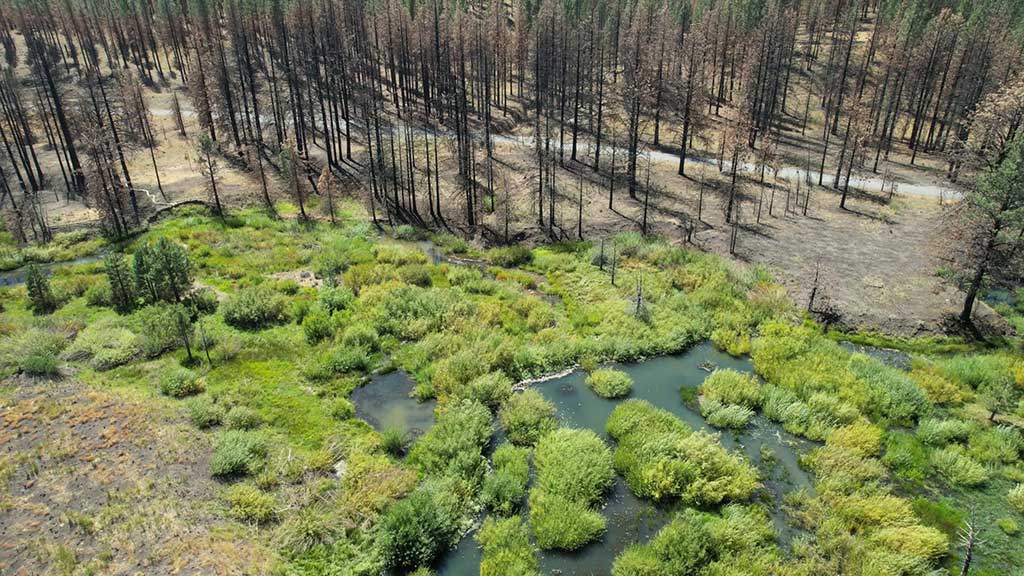Beaver wetlands provide a wildlife refuge from wildfire. Photo by Emily Fairfax.
Stretches of river that had beaver dams fared better in three fearsome Colorado fires in 2020. People charged with repairing wildfire damage are taking heed.
River segments hosting beaver-created dams fared far better during and after megafires than riverscapes without beaver activity, leaving pockets of intact habitat crucial for wildlife, and protecting waterways from runaway erosion, a study published in The Geological Society of America in January found.
There are many related benefits for native plant species, terrestrial and aquatic wildlife, river health and human communities downstream of the burn scar, according to researchers. In fact, beaver habitat is proving so valuable for wildfire mitigation and restoration that restorationists are imitating these rodents across the state.
The reason beaver ponds have such fortitude against wildfire has to do with the hydrology they enact. Beaver dams hold back water and beaver canals spread it out. The weight of the pond presses water into the ground and out over a broad swath of the valley floor, raising the water table and increasing soil moisture. The result: a verdant valley bottom that doesn’t burn.
These green islands constitute fire refugia: patches that either don’t burn, or burn at a low-enough severity that wildlife can hide there while the fire rages, and where these same animals can find food, water and shelter afterward, when the rest of the forest is char black.
“Today, in the mountains — and especially in the river corridors — there’s very little fire refugia that’s reliable outside of the beaver wetlands,” Fairfax said. “They’ve become this disproportionately important source of healthy habitat.”

